Manipal Exam Pattern (MET) 2021 can be seen by the candidates for various courses through the University official website. University conducts the entrance exam of MET every year to tender admission into variety of programmes. Candidates are get admissions at the university and its affiliated institutions/colleges on the basis of the score they secured in MET paper. In this article, you will get the complete details regarding the MU OET Manipal Exam Pattern 2021.

Manipal Exam Pattern 2021
Exam Pattern is different for number of courses offered by the University to the students. Candidates must go through the exam pattern thoroughly before starting the preparation for the exam. Given below is the exam pattern for some courses as per the prior year’s trend:
For B.B.A Programme:
- Mode of Exam: The entrance test will be planned in online remote proctored mode.
- Type of Questions: The entrance exam paper will consist of multiple choice questions from five different subjects.
- Subjects: The questions will be from the subjects like Conceptual, numeracy, General awareness, General English and Case study.
- Duration of exam: The total time duration will be of 2 hours.
- Number of questions: The paper will consist of 100 questions in total.
Table of marks distribution is given below:
| Subjects | No. of Questions |
| Numeracy | 20 |
| General English | 20 |
| General awareness | 20 |
| Conceptual | 25 |
| Case study | 15 |
| Total | 100 |
For B.Tech Programme:
- Mode of Exam: The entrance test will be organized in online proctored mode.
- Type of Questions: The entrance exam paper will consist of multiple choice questions from different topics.
- Subjects: The questions will be from the subjects like Physics, Mathematics, Chemistry and General Aptitude.
- Duration of exam: The total time duration will be of 2 hours and 30 minutes.
- Number of questions: The paper will consist of 200 questions in total.
- Physics and Chemistry section will contain 50 questions each.
- Whereas, Mathematics section will contain 70 questions and 30 questions from General Aptitude.
Table of marks distribution is given below:
| Subjects | No. of Questions |
| Physics | 50 |
| Chemistry | 50 |
| Mathematics | 70 |
| General Aptitude | 30 |
| Total | 200 |
For M.Tech Programme:
- Mode of Exam: The entrance test will be held in online CBT mode.
- Type of Questions: The entrance paper will consist of multiple choice questions of different topics.
- Subjects: The questions will be from the discipline selected by the candidate and from engineering mathematics too.
- Duration of exam: The total time duration will be of 1 hour and 30 minutes.
- Number of questions: The paper will consist of 60 questions in total.
- There will be 50 questions from the discipline, selected by the candidate and 10 questions from engineering mathematics also.
The marks distribution table is given below:
| Subjects | No. of Questions |
| Engineering mathematics | 10 |
| Respective discipline | 50 |
| Total | 60 |
Syllabus for B.Tech:
Aspirants can check the detailed syllabus for B.Tech courses:
Physics:
Kinematics – Motion in a straight line, uniformly accelerated motion, Scalar and vector quantities, Elementary concepts of differentiation and integration for describing motion, relative velocity, Unit vector, etc.
Units and Measurement – Systems of units, accuracy and precision of measuring instruments, fundamental and derived units, Dimensions of physical quantities, etc.
Work and Energy – kinetic energy, work-energy theorem, non-conservative forces, potential energy of a spring, conservative forces, etc.
Laws of Motion – Inertia, Newton’s first law of motion, Equilibrium of concurrent forces, laws of friction, Law of conservation of linear momentum and its applications, rolling friction, etc.
Gravitation – Gravitational potential energy and gravitational potential, Universal law of gravitation, escape velocity, etc.
Motion of System of Particles and Rigid Body – Centre of mass of a uniform rod, angular momentum, comparison of linear and rotational motions, Moment of a force, torque, etc.
Thermodynamics – First law of thermodynamics, Heat engine and refrigerator isothermal and adiabatic processes, reversible and irreversible processes, etc.
Properties of Bulk Matter – Hooke’s law, Young’s modulus, bulk modulus, Stokes’ law, terminal velocity, streamline and turbulent flow, Pascal’s law and its applications, Viscosity, application of surface tension ideas to drops, bubbles and capillary rise, etc.
Oscillations and Waves – Displacement as a function of time, Transverse and longitudinal waves, speed of wave motion, periodic functions, oscillations of a loaded spring-restoring force and force constant, etc.
Current Electricity – Flow of electric charges in a metallic conductor, electrical resistivity and conductivity, series and parallel combinations of resistors, drift velocity, electrical energy and power, Kirchhoff’s laws and simple applications, etc.
Electrostatics – Conservation of charge, superposition principle and continuous charge distribution, electric field lines, Coulomb’s law-force between two point charges, electric dipole, electric field due to a dipole, etc.
Chemistry:
Basic concepts in Chemistry – Dalton’s atomic theory, Atomic and molecular masses, vapour density-definition, concept of atom, Laws of chemical combination, Relationship between molecular mass and vapour density, etc.
Atomic structure – Atomic number and atomic mass, Balmer series, Paschen series, Brackett series and Pfund series, Explanation of origin of lines in hydrogen spectrum, Balmer series, Paschen series, Brackett series and Pfund series, etc.
Solutions – Molarity, molality, normality, depression of freezing point, elevation of boiling point, mole fraction, Vapour pressure of solutions and Raoult’s law, osmotic pressure, etc.
Chemical Kinetics – Commercial importance of rate studies, numerical problems, Determination of the order of a reaction by the graphical and the Ostwald’s isolation method, First order reaction. fractional order and pseudo first order reactions with illustrations, etc.
Chemical thermodynamics – State functions, First law of thermodynamics -internal energy and enthalpy, enthalpy of bond dissociation, Spontaneous and non-spontaneous processes, , combustion, formation, etc.
Periodic properties – Ionization energy, Modern periodic law and present form of periodic table, comparison of size of cation and anion with the parent atom, electron affinity, etc.
Environmental chemistry – Greenhouse effect and global warming, Atmospheric pollution – tropospheric and stratospheric, Particulate pollutants – smoke, dust, smog, fumes, mist, their sources, etc.
Basic principles of organic chemistry – Compounds containing halogens, oxygen, nitrogen and sulphur, Shapes of simple molecules – hybridization, isomerism – structural and stereoisomerism, etc.
Aldehyde and Ketones – Relative reactivities of aldehydes and ketones, Cannizzaro reaction, Haloform reaction, important reactions such as nucleophilic addition, etc.
Polymers – General methods of polymerization – addition and condensation, some important polymers with emphasis on their monomers and uses, copolymerization, natural and synthetic rubber and vulcanization, etc.
Mathematics:
Sets, Relations and Functions – Trigonometric functions, Inverse trigonometric functions,Relations and functions, Sets, etc.
Algebra – Permutations and combinations, Sequence and series, Determinants, Complex numbers and quadratic equations, Principle of mathematical induction, Linear inequalities, Binomial theorem.
Calculus – Continuity and differentiability, Differential equations, Applications of the integrals, Integrals, Limits and derivatives, Applications of derivatives, etc.
Statistics and Probability – Analysis of frequency distributions, outcomes, sample spaces, exhaustive events, Mean deviation, variance and standard deviation, mutually exclusive events, Probability of an event, probability of ‘not’, ‘and’, & ‘or’ events.
Linear Programming – Objective function, graphical method of solution, feasible and infeasible solution, optimization, mathematical formulation of L.P. problems, etc.
Mathematical Reasoning – Connecting words/phrases, converse and contrapositive,
validate the statements involving the words – difference between contradiction.
Coordinate Geometry, Vectors and Three-Dimensional Geometry – Straight lines, a point, a straight line and pair of intersecting lines Vectors, Three-dimensional geometry, Conic sections, ellipse, parabola, hyperbola, etc.
English:
Use of proper tense and sequence of tense, Determiners/ Use of proper articles, Modals (have to/had to, must, should, need, ought to and their negative forms), Usages in English, Vocabulary, Subject – Clauses, Pronouns, verb concord, Sentence structure, etc.
Also read : Archarya Narendra Dev College
Syllabus for B.Pharm (PCB combination):
The syllabus will cover topics from physics, chemistry, English and biology subjects only. The syllabus for Physics, English and Chemistry will remain same as B.Tech syllabus given above. The detailed syllabus for biology is mentioned below:
Biology:
General Biology Topics – Introduction to Biology, Origin of life and organic evolution, Biomolecule, Cell Biology, Cell Reproduction, Biosystematic, Chromosomes, Molecular Biology, Biotechnology, Gene, etc.
Botany Topics – Viruses, Cyanobacteria, Diversity of life on earth, Bacteria, Kingdom Protista, Kingdom Metaphyta, Gymnosperms, Kingdom Mycota, Pteridophyta, Angiosperms, Taxonomy and Economic Botany, Growth and growth regulators in plants, Water relations of plants, Bioenergetics,.
Zoology Topics – Diversity of animal life, Aquaculture, Study of Morphology, Dairy, Poultry, etc.
Preparation Tips for Manipal Exam Pattern 2021
Given below are some important MU OET Preparation Tips for the candidates:
- Make a suitable time table and pursue it on the daily basis.
- Check all the previous year questions papers and crack mock tests sincerely.
- Confirm complete syllabus and exam pattern before starting your preparation.
- Make revision notes and give online practice test time to time.
- Take care of your fitness and drink ample of water daily.
Marking Scheme for Manipal Exam Pattern 2021
MU OET 2021 marking scheme for admission into different programmes is mentioned below:
- There will be no negative marking for wrong answers except in ME/M.Tech exam.
- For every wrong answer 1 mark will be deducted.
- In ME/M.Tech exam, 4 marks will be given for every right answer.
- Other than M.Tech/ME, there will be no negative marking in any other entrance exam of different programmes.
- The score/rank of student will depend upon the no. of right answers made without any deduction for wrong answer.
For more information visit : Education In India








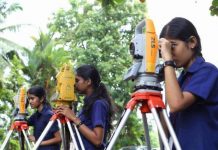




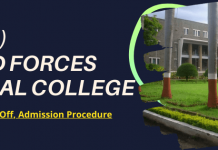







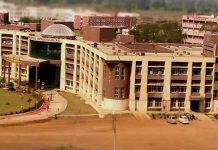

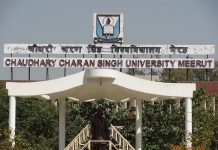


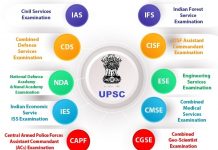


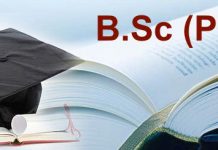
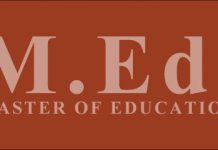







[…] Manipal Exam Pattern […]
[…] Manipal Exam Pattern […]